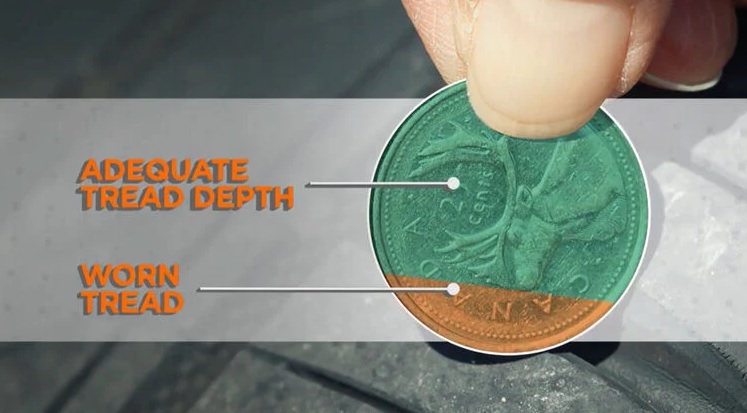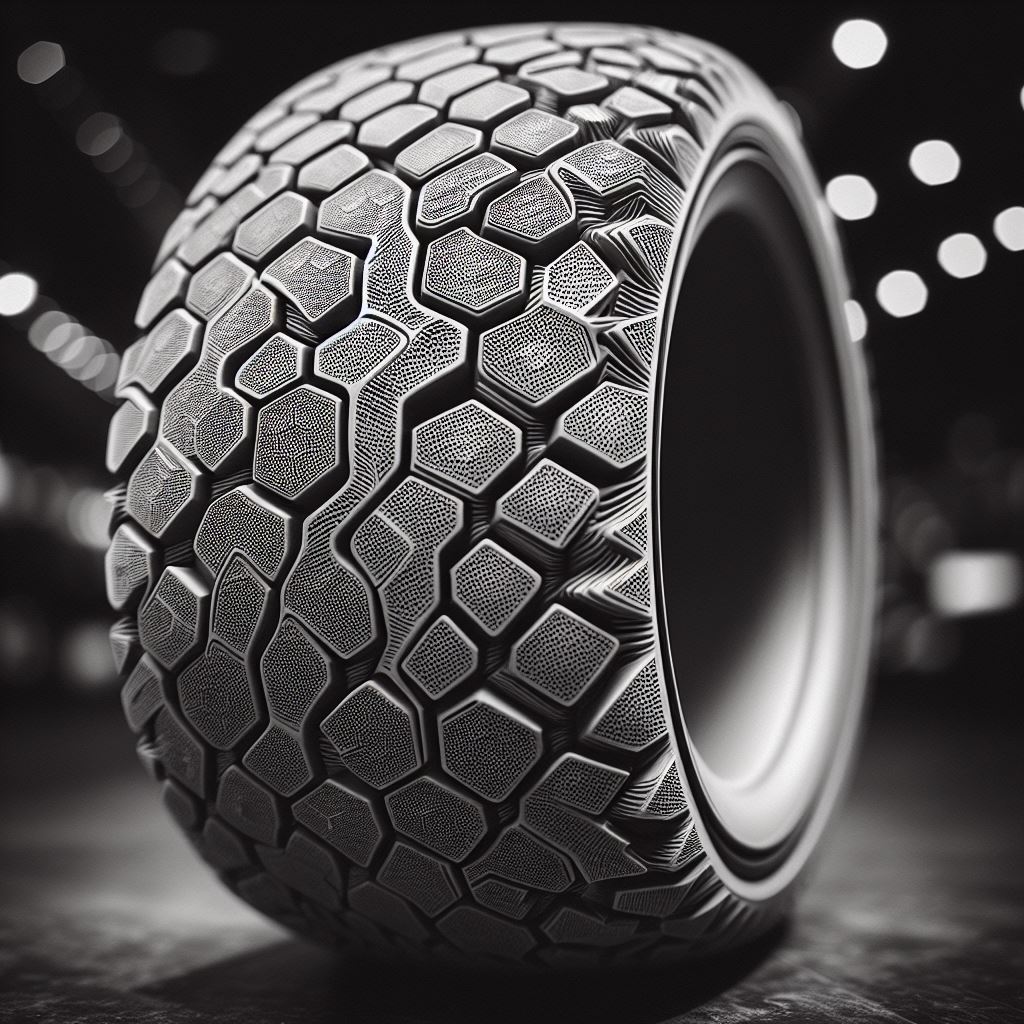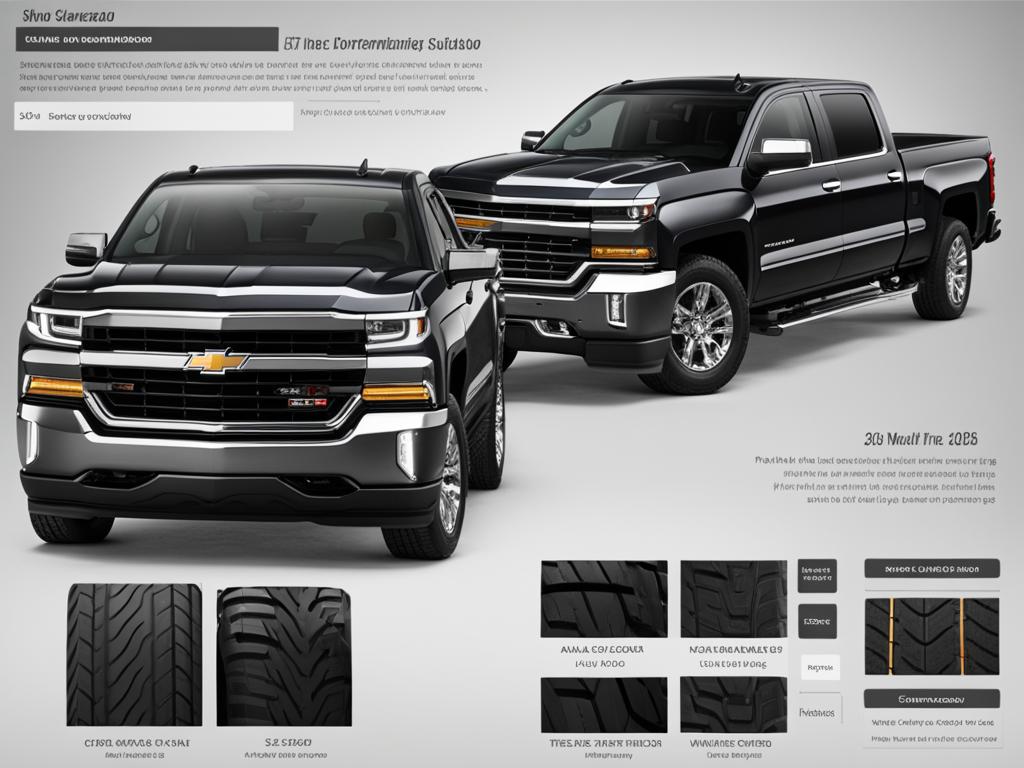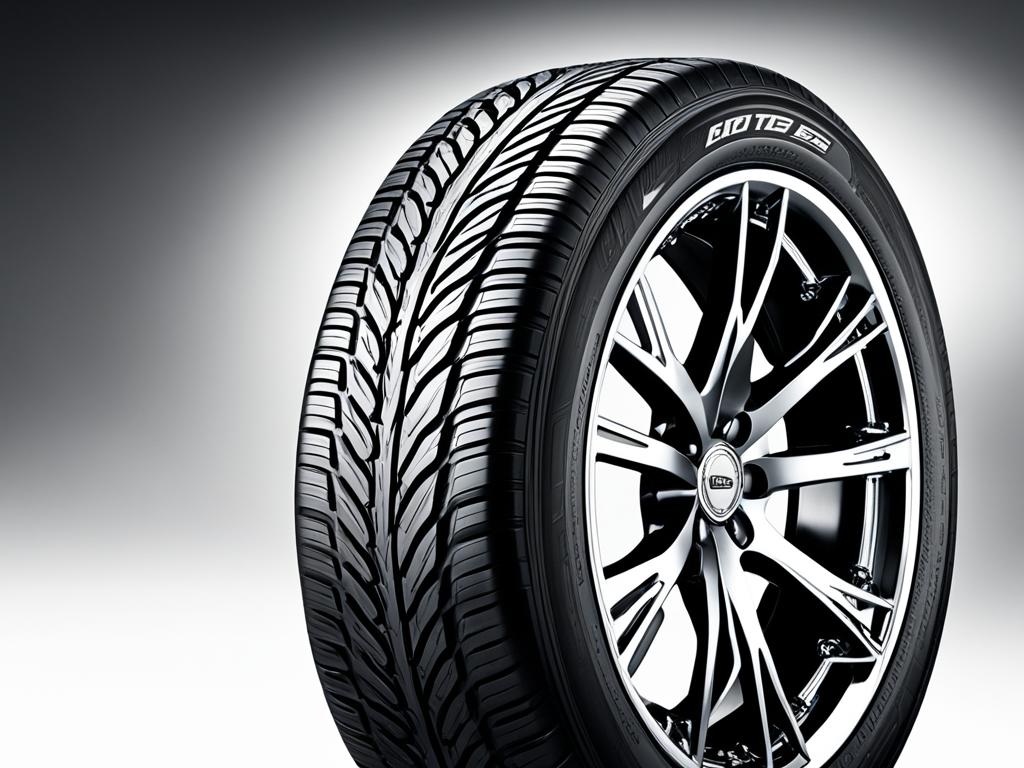Have you ever wondered why tire tread depth is so important? How can a few millimeters of rubber make a difference in your safety on the road? Understanding the significance of tire tread depth is crucial to maintaining optimal performance and ensuring your safety while driving.
When it comes to tire tread depth, there are numerous factors to consider. From the type of vehicle you drive to the weather conditions you encounter, having the right amount of tread depth can greatly impact your traction, handling, and overall driving experience.
In this ultimate guide, we will delve into the world of tire tread depth. We’ll explore everything from how to measure it and why it matters to the legal requirements and safety implications. So, let’s dive in and discover the secrets behind the tire tread depth chart!
Key Takeaways:
- Understanding the role of tire tread depth in road traction
- The risks associated with low tread depth and hydroplaning
- Legal requirements for tire tread depth and safety implications
- The specific needs of off-road and performance vehicles for tire tread depth
- How to assess tire tread wear and performance impacts

The Importance of Tire Tread Depth for Vehicle Safety
Table of Contents
ToggleUnderstanding the role of tire tread depth is crucial for maintaining optimal safety and performance on the road. The depth of your tire tread directly affects key factors such as road traction and the risk of hydroplaning.
Understanding the Role of Tread Depth in Road Traction
Tread depth refers to the measurement of the space between the top of the tire tread and the bottom of the tire’s grooves. This pattern of grooves is designed to provide grip and traction on various road surfaces.
When the tread depth begins to wear down, the tire loses its ability to effectively grip the road. This can result in reduced traction, especially in wet or slippery conditions. It affects your vehicle’s ability to start, stop, and navigate safely, increasing the risk of accidents.
Learn More about Best all season tire for Subaru outback
How Low Tread Depth Increases the Risk of Hydroplaning
Hydroplaning occurs when a thin layer of water accumulates between the tires and the road, causing the tires to lose contact with the road surface. This results in a loss of control and significantly increases the risk of accidents.
Tires with low tread depth have a higher chance of hydroplaning due to their reduced ability to channel water away from the surface. Adequate tread depth helps to disperse water effectively, maintaining proper traction and reducing the risk of hydroplaning.
Legal Tire Tread Depth Requirements and Safety Implications
It is crucial to understand and comply with legal tire tread depth requirements to ensure your safety and avoid potential penalties. The legal minimum tread depth requirements vary by jurisdiction, but a common threshold is 2/32 of an inch.
Tires with tread depths below the legal requirements may compromise vehicle safety and increase the likelihood of accidents. Inadequate tread depth can increase stopping distances, reduce responsiveness, and make it more challenging to navigate safely during inclement weather conditions.

Regularly checking and maintaining proper tire tread depth is essential for your safety and the safety of others on the road.
Learn more about Best tire storage rack and covers
Tire Tread Depth for Off-Road and Performance Vehicles
When it comes to off-road and performance vehicles, tire tread depth plays a critical role in ensuring optimal performance and safety. These vehicles often encounter challenging terrains and require tires that can withstand the demands of their intended use.

Off-road vehicles, such as SUVs and trucks, are designed to navigate through rugged terrain, including mud, gravel, and uneven surfaces. To maintain traction and stability, these vehicles often require tires with deeper tread depth compared to regular passenger vehicles.
Performance vehicles, on the other hand, prioritize speed and handling, especially on dry pavement. Tires for these vehicles are designed with a specific tread pattern and depth to maximize grip and cornering capabilities. Achieving the optimum balance between tread depth and tire performance is crucial for a thrilling driving experience.
When selecting tires for off-road or performance vehicles, it’s essential to refer to a tread depth chart. This chart provides guidelines on the minimum tread depth required for different driving conditions. It helps you make an informed decision and ensures that your tires meet the necessary safety standards for your vehicle type.
Remember, maintaining the right tire tread depth is crucial for both off-road enthusiasts and performance car owners. It directly impacts traction, handling, and braking performance, allowing you to experience the vehicle’s full potential while ensuring your safety on and off the road.
In the next section, we will explore the factors that contribute to uneven tire wear and the signs of tread wear and performance deterioration.
Learn more about Best off road tires for Toyota Tacoma
Assessing Tread Wear and Performance Impacts
Factors Contributing to Uneven Tire Wear
Uneven tire wear is a common problem that many drivers face. Several factors can lead to the development of uneven wear patterns on tires, resulting in compromised performance and safety. Some of the key factors contributing to uneven tire wear include:

- Poor wheel alignment: Improper alignment can cause tires to wear unevenly, leading to excessive wear on one side of the tire.
- Improper tire inflation: Incorrect tire pressure can cause uneven wear across the tire’s tread, resulting in premature wear on certain areas.
- Suspension issues: Problems with the suspension system, such as worn-out components or misalignment, can cause uneven tire wear.
- Unequal weight distribution: Uneven weight distribution, often caused by improper loading or cargo placement, can lead to uneven tire wear.
Identifying and addressing these factors promptly is crucial in preventing further tire damage and maintaining optimal tire performance.
Signs of Tire Tread Wear and Performance Deterioration
Recognizing the signs of tire tread wear and performance deterioration is essential for maintaining safe and reliable vehicle operation. Some common signs to look out for include:
- Uneven tread wear: Different tread depths across the tire’s surface indicate uneven wear and the need for attention.
- Bald spots: Smooth, worn-out areas on the tire indicate significant tread wear and a lack of traction.
- Cracks or bulges: Visible cracks or bulges on the tire sidewall or tread can be signs of tire damage and potential failure.
- Loss of grip: Reduced traction, especially in wet or slippery conditions, can indicate deteriorating tire performance.
- Increased stopping distance: If your vehicle takes longer to stop than usual, it may be a sign of worn-out tire treads.
By regularly inspecting your tires for these signs, you can address tire tread wear and performance issues promptly, ensuring your safety on the road.
Tire Tread Depth Chart and Its Usage
To ensure optimal tire performance and safety, it is crucial to maintain the correct tread depth. A tire tread depth chart serves as a valuable reference tool for monitoring and assessing the condition of your tires. By understanding the proper measurements and guidelines, you can ensure that your tires are in excellent shape for the road.
A tire tread depth chart provides a visual representation of the acceptable tread depth range for different types of tires. It typically includes measurements in either millimeters or inches, allowing you to easily determine if your tires meet the recommended tread depth standards.
To accurately measure the tread depth of your tires, you will need a tread depth gauge. This simple tool allows you to measure the depth of the tread grooves and determine if it falls within the recommended range. By regularly measuring and monitoring your tire tread depth, you can detect any signs of wear or deterioration early on, helping you avoid potential safety hazards.
Most tire manufacturers recommend replacing your tires when the tread depth reaches a certain minimum measurement. This is typically indicated by the tire wear indicators, which are small rubber bars located in the tread grooves. Once the tread wears down to the level of these indicators, it is a clear sign that your tires need to be replaced.
Referencing a tire tread depth chart can help you understand the recommended tread depth measurement for your specific tires. By adhering to these guidelines, you can ensure that your tires provide optimal traction, handling, and performance on the road, enhancing both your safety and the longevity of your tires.
| Tire Type | Recommended Tread Depth |
|---|---|
| All-Season Tires | 6/32 – 8/32 inches |
| Winter/Snow Tires | 6/32 – 8/32 inches |
| High-Performance Tires | 4/32 – 6/32 inches |
| Off-Road Tires | 8/32 – 10/32 inches |
Why Tire Tread Depth Matters
When it comes to tire safety, tread depth plays a crucial role. The tread of a tire is responsible for maintaining traction and handling on the road surface. It ensures that your vehicle maintains a firm grip, allowing for precise control and maneuverability, especially in adverse weather conditions.
Having sufficient tire tread depth is vital for your safety and the safety of others on the road. As the tread wears down over time, the ability of your tires to effectively grip the road surface diminishes. This can result in reduced traction and handling, increasing the risk of accidents and compromising your overall driving experience.
Proper tire tread depth allows the tire to channel water away from the contact patch, preventing hydroplaning. It helps to disperse water, snow, or mud, maintaining a solid connection with the road and preventing skidding or sliding.
It’s essential to check your tire tread depth regularly to ensure that it meets the recommended standards. By doing so, you can identify any potential issues early on and take necessary measures to maintain optimal tire performance and safety.
| Tread Depth (in inches) | Condition | Impact on Traction and Handling |
|---|---|---|
| 9/32″ – 10/32″ | Excellent | Provides optimal grip and handling, especially in wet or slippery conditions. |
| 7/32″ – 8/32″ | Good | Offers satisfactory traction in most normal driving conditions. |
| 4/32″ – 6/32″ | Fair | Starts to show signs of decreased traction and increased risk of hydroplaning. |
| < 4/32″ | Poor | Significantly compromised traction, posing a serious safety risk. Immediate replacement is advised. |
As shown in the table, the depth of your tire tread directly impacts its traction and handling performance. Maintaining adequate tread depth is crucial for safe driving, especially in challenging road conditions.
Remember to regularly monitor your tire tread depth and replace your tires when they reach the recommended wear limit. By doing so, you can ensure optimal traction, handling, and overall tire safety, providing peace of mind on every journey.
How to Check Tire Tread Depth?
In order to ensure the safety and performance of your tires, it is essential to regularly check the tread depth. Here, we will discuss various methods for checking tire tread depth, including the use of a tire tread depth gauge and the penny test.
Methods for Checking Tread Depth
One of the most accurate ways to check tire tread depth is by using a tire tread depth gauge. This simple tool allows you to measure the depth of the tire treads in millimeters or inches. To use a tire tread depth gauge, follow these steps:
- Insert the probe of the gauge into the tread groove, ensuring that it touches the bottom of the groove.
- Read the measurement indicated on the gauge. Ideally, the tread depth should be above the minimum recommended level.
- Repeat the process in multiple locations across the tire to ensure even wear.

Another popular method for checking tire tread depth is the penny test. This method provides a quick and easy way to determine if the tread depth is sufficient. Follow these steps to perform the penny test:
- Take a penny and hold it between your thumb and forefinger.
- Insert the penny into a tread groove with Lincoln’s head facing downward.
- Observe if Lincoln’s head is partially or fully covered by the tread. If his head is completely visible, it indicates that the tread depth is too low and the tire needs to be replaced.
Determining When to Replace Your Tires
As a responsible vehicle owner, it’s crucial to know when it’s time to replace your tires. Continuing to drive on worn-out tires can compromise your safety on the road and negatively impact the performance of your vehicle. In this section, we will discuss the indicators that can help you determine when it’s time to replace your tires, as well as the importance of professional inspections and recommendations.
Using Tire Wear Indicators for Quick Assessment
One of the easiest ways to check the condition of your tires is by using tire wear indicators. These are small rubber bars located in the grooves of the tire tread. When the tread wears down to the level of these indicators, it’s a clear sign that your tires need to be replaced. If you notice the wear indicators are visible, it means your tires have reached their minimum tread depth and should be replaced immediately.

Regularly inspecting your tires for wear indicators is essential to ensure optimal safety and performance. By doing so, you can catch early signs of tire wear and address them promptly, reducing the risk of accidents due to inadequate tread depth.
Professional Inspections and Recommendations
While tire wear indicators can give you a quick assessment of your tire’s condition, it’s also essential to seek professional inspections and recommendations. Tire experts have the knowledge and experience to conduct a thorough examination of your tires, identifying any hidden signs of wear or damage that may not be visible to the naked eye.
During a professional inspection, experts will assess factors like tread depth, tire age, and overall tire condition. Based on their findings, they can provide valuable recommendations on whether it’s time to replace your tires or if maintenance measures can be taken to address any issues. By relying on the expertise of professionals, you can ensure that your tires are in optimal condition, maximizing your safety on the road.
In conclusion, determining when to replace your tires is crucial for maintaining your safety and the performance of your vehicle. By using tire wear indicators for quick assessments and seeking professional inspections and recommendations, you can make informed decisions about tire replacement. Remember to regularly check your tires for signs of wear, and never hesitate to consult with tire experts when in doubt.
Conclusion
In conclusion, maintaining optimal tire tread depth is crucial for ensuring both your safety and the performance of your vehicle. A tire with proper tread depth provides better traction and handling, allowing you to have more control on the road. It also reduces the risk of hydroplaning, particularly in wet conditions, which can lead to accidents and jeopardize your safety.
Regular check-ups and proactive tire maintenance are essential to keeping your tires in top condition. By regularly checking the tread depth of your tires using a tread depth gauge or other methods, you can quickly identify any signs of wear and take appropriate action. If your tires are showing significant wear or have tread depth below the recommended standards, it’s crucial to replace them promptly to maintain optimal performance and safety.
Don’t underestimate the importance of proactive tire maintenance. Regularly inspecting your tires for signs of wear, such as uneven tread wear or tire tread indicators, can help you identify potential issues before they become major problems. Additionally, proper tire rotation and alignment can extend the lifespan of your tires and ensure even wear, resulting in better overall performance and longevity.
In summary, maintaining optimal tire tread depth through regular check-ups and proactive tire maintenance is essential for your safety and the performance of your vehicle. By staying vigilant and taking necessary action when needed, you can ensure that your tires provide the traction and handling you need, giving you peace of mind on the road.
FAQ
What is the purpose of tire tread depth?
Tire tread depth plays a crucial role in maintaining road traction and preventing hydroplaning. It is essential for safe driving in various weather conditions.
How do I measure tire tread depth?
You can use a tread depth gauge to measure the depth of the tire tread. Simply insert the gauge into the tread grooves and read the measurement displayed on the gauge.
What is the minimum tire tread depth required?
The minimum legal tire tread depth varies by jurisdiction but is typically around 2/32 of an inch. However, it is recommended to consider replacing tires when the tread depth reaches 4/32 of an inch for better safety and performance.
What are tire wear indicators?
Tire wear indicators are small raised bars located within the tire grooves. When the tire tread wears down to the same level as these indicators, it is a sign that the tires need to be replaced.
What is the recommended tire tread depth for driving in rain?
For safe driving in rainy conditions, it is recommended to have a minimum tread depth of at least 4/32 of an inch. This depth helps channel water away from the tire and improves traction on wet roads.
What is the recommended tire tread depth for driving in winter?
To ensure better grip on snowy or icy roads, it is advisable to have a minimum tread depth of 6/32 of an inch or more for winter driving.
How often should I check my tire tread depth?
It is recommended to check your tire tread depth at least once a month and before any long trips. Regular inspections help ensure optimal tread depth for safe and efficient driving.
How can I check my tire tread depth without a gauge?
One common method is the penny test. Insert a penny into the tire tread with Lincoln’s head facing down. If you can see the top of Lincoln’s head, it indicates that the tread depth is less than 2/32 of an inch and the tire needs to be replaced.
When should I replace my tires?
In addition to measuring the tread depth, you should also consider other signs of tire wear, such as cracking or bulging. If your tires show these signs or if they are consistently wearing unevenly, it is time to replace them.
How can professional inspections help with tire replacement decisions?
Professional inspections by experienced technicians can provide a comprehensive assessment of the tire condition, including tread wear, tire age, sidewall damage, and other potential issues. They can offer accurate recommendations for tire replacement if necessary.



